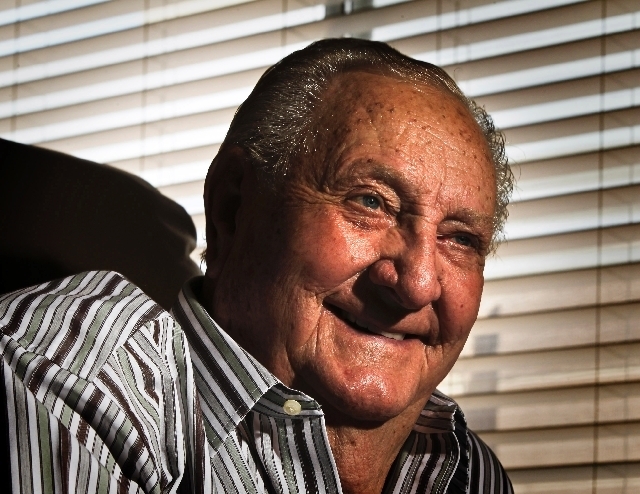Nevada has had its share – and then some – of colorful lawmen

It took some time, but Nevada lawman Tom Logan finally got his due.
Proper recognition of the turn-of-the-century sheriff in the raucous Tonopah mining district was slow in arriving. Author Jackie Boor’s well-researched and generous biography of Logan was recently published, just 108 years after he was fatally wounded outside a Manhattan, Nev., brothel called the Jewel. It’s called, “Logan: The Honorable Life and Scandalous Death of a Western Lawman.”
As you might imagine, getting shot to death outside a whorehouse where he had taken up residence served to obscure the rest of Logan’s adventurous existence. The fact he was wearing nothing but a nightshirt didn’t help, either. But it’s important to remember that history judges best when it keeps in perspective a character’s place in time.
I was thinking about the late Tom Logan the other day when I learned the National Museum of Organized Crime and Law Enforcement is debuting a new exhibit dedicated to former Clark County Sheriff Ralph Lamb, who is still very much alive and kicking and qualifies as a colorful character by anyone’s measure. Around these parts, the 86-year-old Lamb is known as the last of Southern Nevada’s cowboy sheriffs, but in reality, his 18-year tenure as the top lawman in Clark County cut right across the dark heart of the mob era in Las Vegas. Not surprisingly, the exhibit is called “The Cowboy Sheriff.”
If Logan’s story is just now coming into focus after more than a century, the arc of Lamb’s career from country boy to top cop has long been chronicled in the press. Elements of Lamb’s life were raised to the level of modern mythology in the short-lived television cowboy-cop drama “Vegas,” which starred Dennis Quaid as the Wild West sheriff in mobbed-up town. The series wasn’t any award-winner, but it was a reminder of the powerful imagery of the Las Vegas lawman.
Our cops-and-gangsters history continues to capture the public’s imagination. It does so in no small part because of Lamb’s out-sized personality and some of the controversies he survived during his long career.
Although the exhibit probably won’t dwell on the times Lamb’s life was notorious, including his ultimately successful tax-evasion fight with the federal government, it’s long overdue at the Mob Museum. Lamb’s story is inextricably intertwined with the evolution of Las Vegas.
The fact that Lamb served not only Southern Nevada residents, but at times also worked for eccentric billionaire Howard Hughes and casino baron Steve Wynn gives you some idea about his place in the history of Las Vegas.
For my money, however, one of the best parts of Lamb’s life story is his rugged journey from a hardscrabble ranch in Alamo to a genuine county lawman in Las Vegas. It wasn’t glamorous, and success on the street didn’t come easily, or without a certain application of the rules that might not have passed muster with civil liberties lawyers.
Lamb was a lawman who moved between worlds at a time in Las Vegas when many casino bosses were raised in the rackets and not educated in the Ivy League. He was sheriff when the mob’s powerhouse attorney, Sidney Korshak. was not only an investor in the Riviera but also a leader of the resort association. How’s that for a complicated atmosphere?
Although he’s known as an old-school cop, Lamb is also credited with bringing innovation and consolidation to the department.
“I can say I truly enjoyed being the sheriff,” Lamb said in a recent interview with his trademark understatement. “But it was a 24-hour-a-day job.”
Unlike some of his predecessors in Nevada history, tough old Ralph Lamb survived it all and has lived long enough to view his own museum exhibit.
John L. Smith’s column appears Sunday, Tuesday, Wednesday, Thursday and Friday. Email him at Smith@reviewjournal.com or call 702-383-0295. Follow him on Twitter @jlnevadasmith.